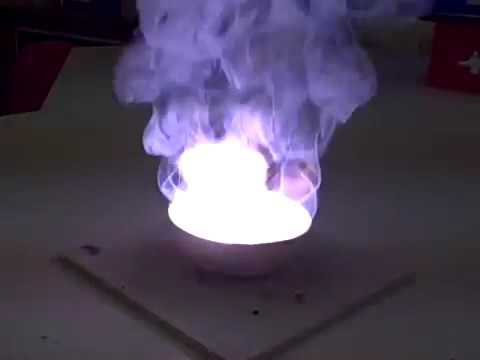What happened to the chemicals once mixed together?
Potassium chloride is a granular chemical compound and is a metal halide salt composed of potassium and chlorine. Potassium chloride is good to use for oxidizing and it is commonly used in fertilizers, explosives, fireworks, etc. Sugar is a great source of energy and it is also used for oxidizing. While sulfuric acid is a corrosive substance, it is also used for manufacturing explosives, copper smelting, batteries, etc. Now, once you add a drop of sulfuric acid to the potassium chloride and sugar, it will react aggressively with each other and will produce a large quantity of heat. As the heat energy starts to release, a spectacular purplish flame begins to form and it comes with a great deal of smoke.
What caused for the reaction to happen?
Potassium chlorate, a white crystalline or powdery solid, is an excellent oxidizing agent. Sugar is naturally an excellent source of energy and is highly susceptible to oxidation. Potassium chlorate and regular sugar react violently when a drop of sulfuric acid is added as a catalyst. This releases a large amount of thermal energy, creating a spectacular purple flame and lots of smoke. (Perhaps the purple color of the flame is due to the heating of the potassium.) When you add a drop of sulfuric acid, the chemicals react with each other, producing a high purple flame and lots of smoke. This reaction often produces large amounts of smoke
PROCEDURE
-Pour a small amount of Potassium Chlorate and Glucose Powder onto the watch glass.
-Gently mix it and add a 1 drop of Sulfuric Acid to the mixture.
-quickly step back and observe.
-The reaction will start slowly, then it will suddenly burst into flame with lots of smoke.
-Wait until the flame goes down.
-Observe how fast and how strong the reaction is.
